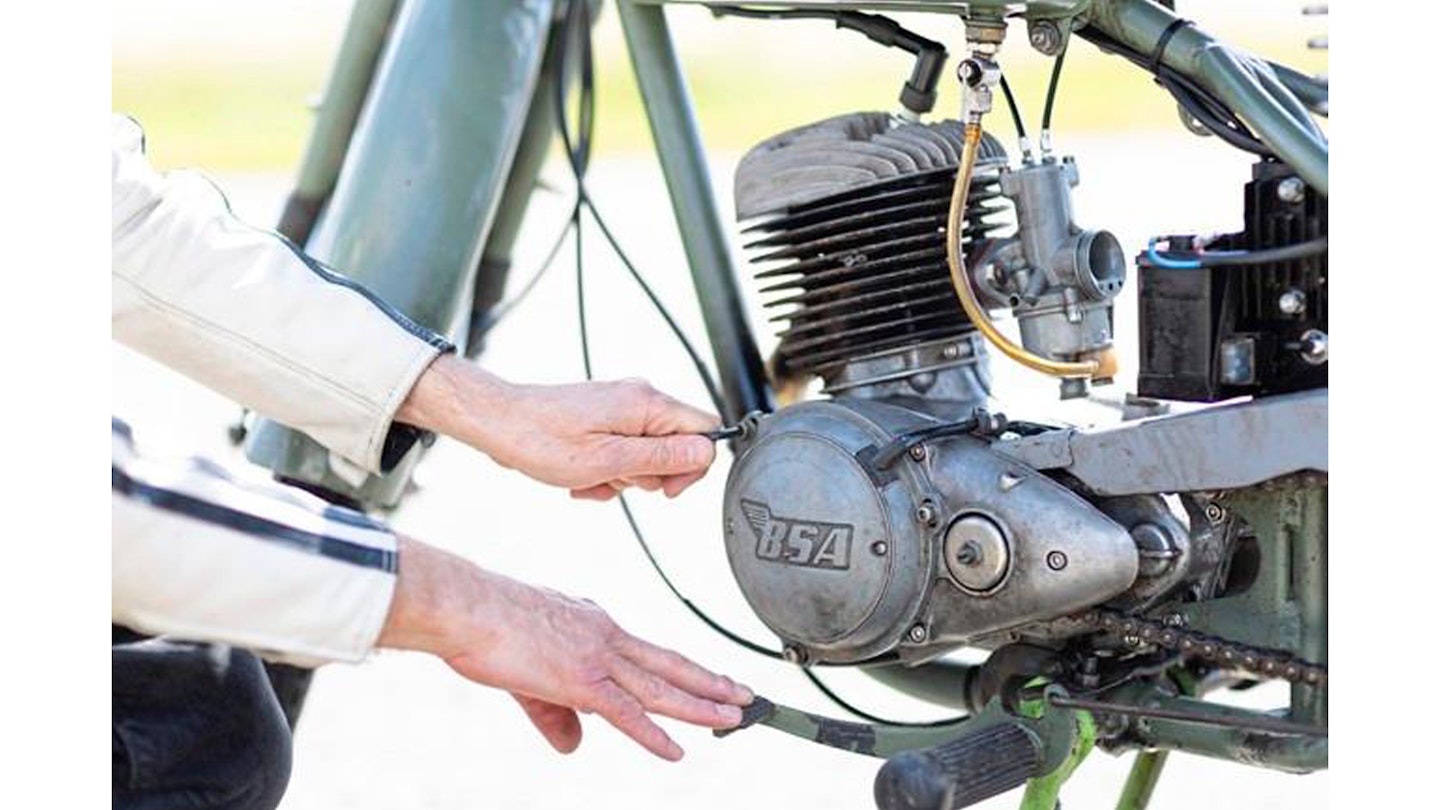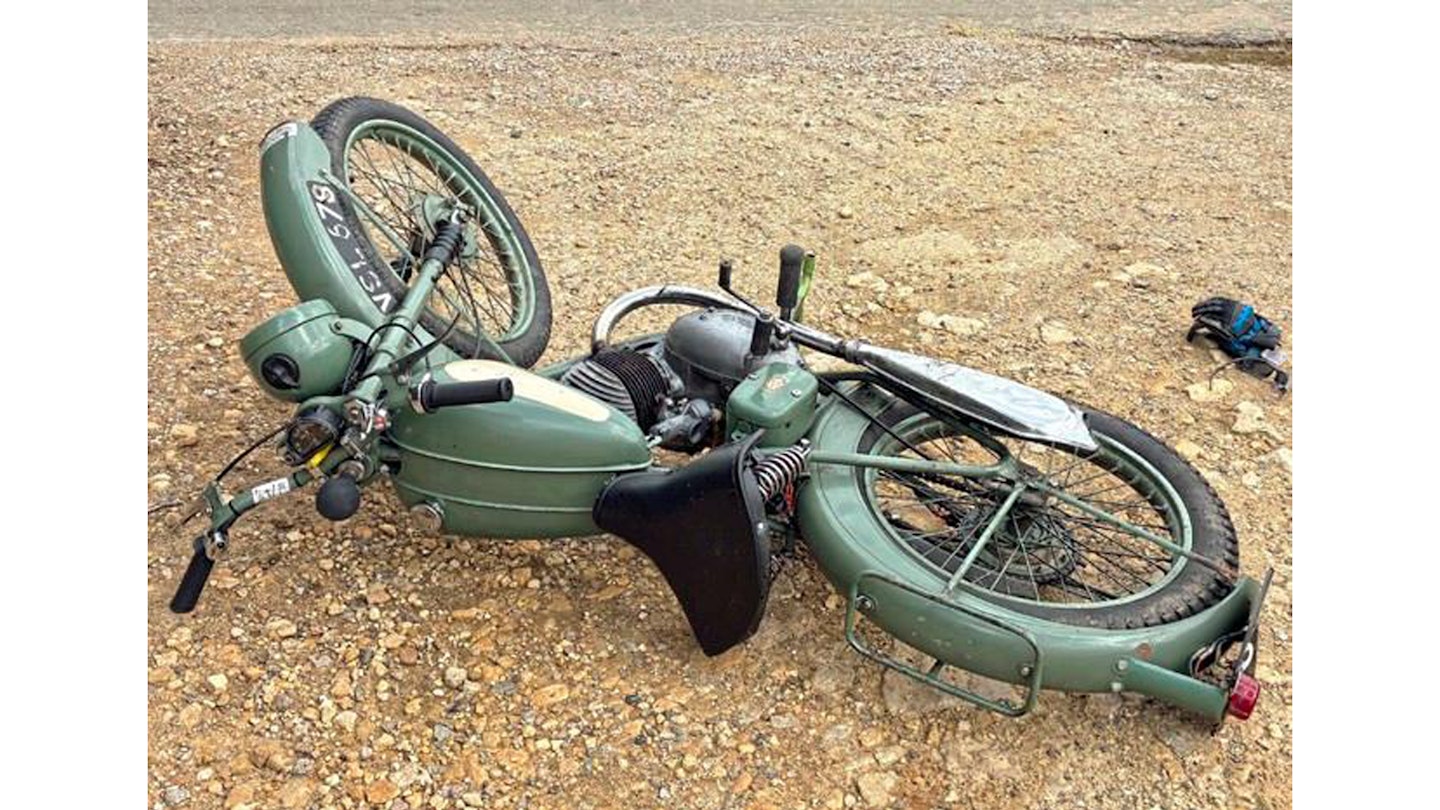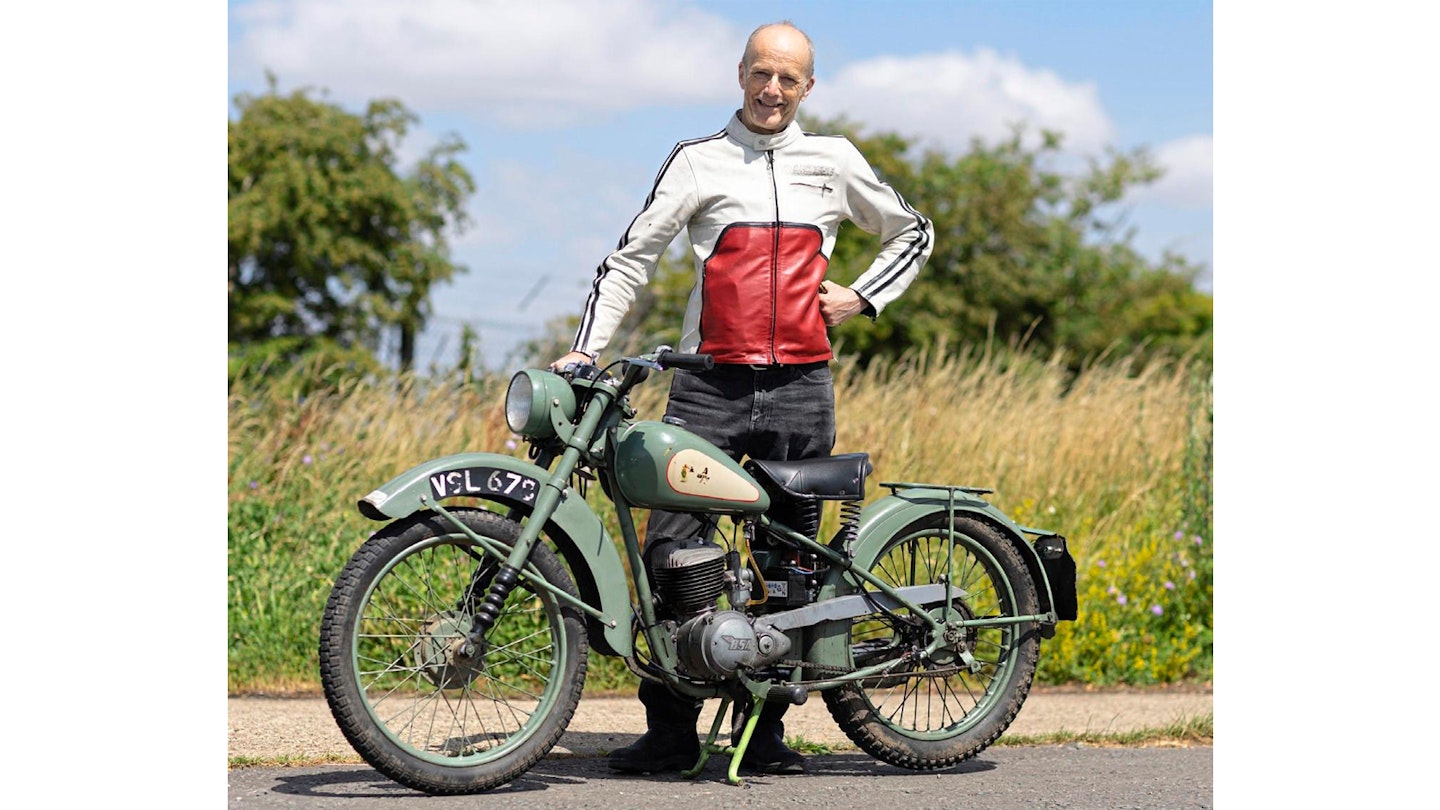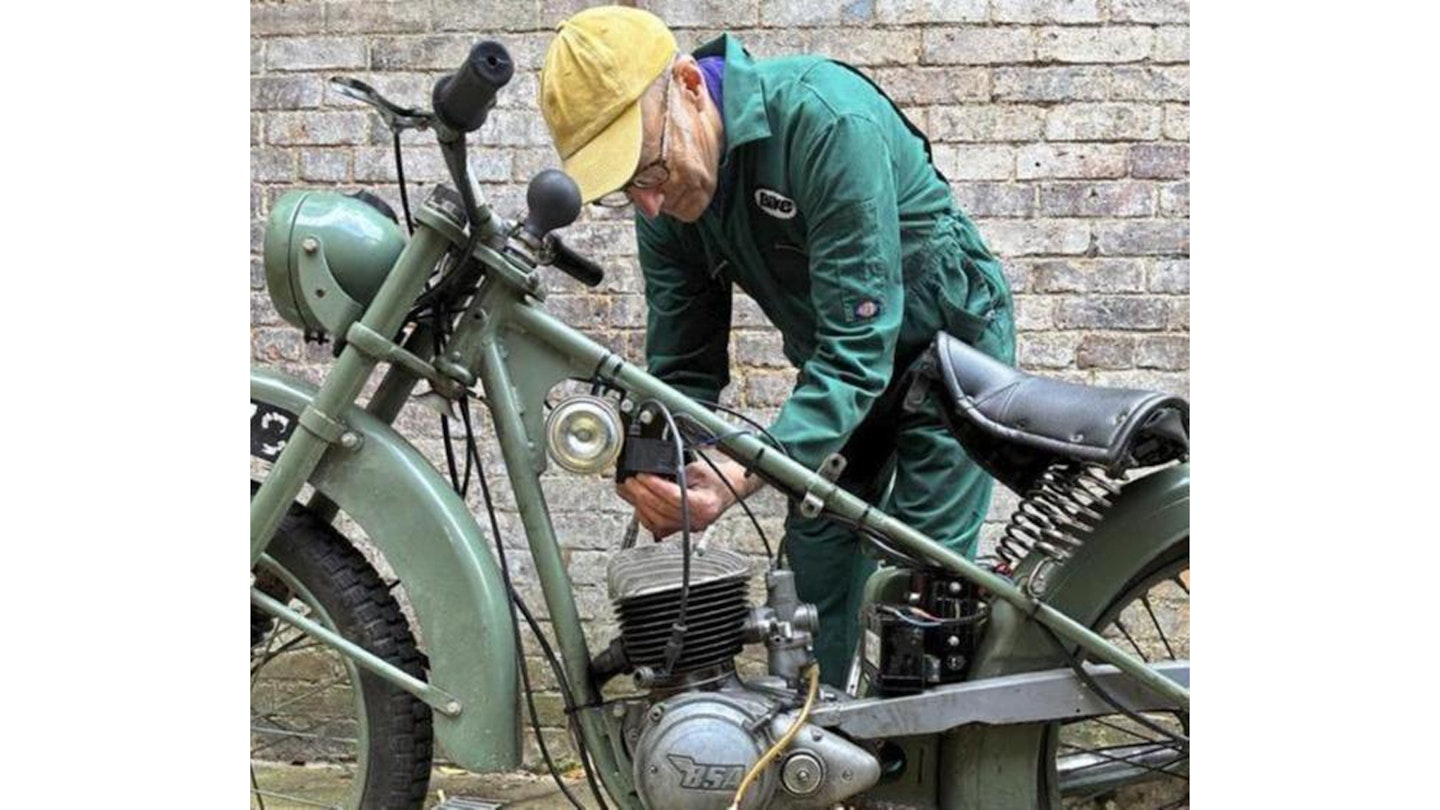The Workshop: PROJECT BANTAM
After two and a half years (and eight instalments) this BSA has been transformed from a bare chassis into an approximately functional bike. It’s been a learning experience
Pics: CHIPPY WOOD, HUGO WILSON

The Bantam flies (well, sort of). I’m hazarding a guess at 50mph, because the speedo is still broken – but on its latest 30-mile test ride it felt crisp. And the lights work too. Wonders never cease...
After a winter spent fixing the centrestand, plugging fuel tank leaks and fitting a new clutch cable, handlebar grips and finally the original exhaust, I had high hopes for springtime entertainment. But at first the little BSA didn’t want to play.
The first test ride of a freshly-fettled bike is always an event full of trepidation, so when the Bantam broke down after 15 minutes it wasn’t a total surprise. Fortunately, it had the grace to coast to a halt outside a pub. It’s important to approach fault-finding in the correct frame of mind, so rather than faff around looking for a spark, I headed to the bar and enjoyed a pint. This was clearly the correct thing to do, as once the bike had cooled off and I’d downed the beer it restarted easily. I took the short way home.

Hoping that it might fix itself, I left it alone for a month before trying again. Same deal, but sadly no convenient pub. It would start easily from cold, run for 15 minutes and then die. Coil? I left it another month and then investigated...
Electrics definitely aren’t my strong suit, but I’ve adopted a new attitude – instead of fruitlessly trying to understand the tricky concepts of electro-magnetic fields, primary windings and alternating currents, I just ignore the theory but follow the instructions about what I’m supposed to check and how I’m supposed to check it. This approach gave me the naïve confidence to make the wiring loom for the Bantam.
Before checking the coil, I watched a couple of mildly confusing YouTube videos and read the technical information on the Electrex World website. I then tested the resistance on the coil’s primary and secondary windings with my multimeter. In this case they’re meant to be one ohm on the primary and around 4.5 ohms on the secondary. All seemed correct, but the test was done with the coil cold, so it wasn’t conclusive.

Electrex World, who’d supplied the alternator/CDI set-up that I’m using on the Bantam, agreed that the readings were right and suggested further tests of the alternator. These confirmed the coil as the chief suspect. Sadly, it was well outside its one-year warranty.
With a new coil fitted, normal service was resumed. ‘Normal service’ being slightly lumpy low-speed running, but with a revvy top end; under load, it pulls strongly and keeps accelerating in top gear on my local test hill. I think it’d comfortably pull taller gearing, maybe one more tooth on the front sprocket for increased speed and a more relaxed ride.
I adjusted the idle and air screws, which gave a marginal improvement to low-speed running. Then I started to play about with the ignition timing. This is easy to adjust on the early Bantams, with the ignition stator plate being fixed by three screws that are accessible on the side of the engine. Try it one way, test it, then try it the other and test it again. Then put it back to what it was in the first place. It seemed that advancing the ignition slightly seemed to make it a bit smoother.
In truth, I think that the low-speed lumpiness is down to a mismatch between the original exhaust with teardrop silencer that was intended for a 3.5bhp 125, and the later 175 engine fitted to the bike. Given that it goes very nicely at the top end – and the exhaust looks great – I think that’s a compromise worth living with.
‘Fired with enthusiasm, I extended my test ride. At this point the bike stopped’

Fired with enthusiasm, I extended my test ride. Obviously, at this point the bike stopped. I feared the worst after previous coil-related difficulties, but the problem appeared to be the fuel supply. You’re already ahead of me – it’d run out of petrol.
Lying the bike on its side transferred the last dregs of petrol to the fuel-tap side of the tank, after which it agreed to be restarted and got me to within half a mile of the petrol station. Thankfully, the Bantam is very easy to push. Topped up with fresh fuel (and two-stroke oil) it chirped away happily once again.
So now the Bantam is in a typical magazine-project state – not quite finished. It needs paint and pinstripes, the speedo needs fixing, the original chainguard needs fitting, there is a slight fuel leak and a new battery might be a good idea. Raising the gearing would be good, too. But most of all it needs more use to iron out any other bugs. I’m not going to do that, though. It feels like we’ve saved the bike, so rather than have it clutter a lock-up, it’s now time for someone else to do the finishing touches and to use it. Could that be you? If so, it’s yours for £1650ono – send an email to letters@classicbike.co.uk if you are interested in buying it.
And even if you don’t want this one, I can recommend a Bantam as a project; they’re simple, with good parts supply, a lovely owners’ club and they qualify you for entry to lots of fantastic events.
Useful contacts

-
Electrex World: Alternator/CDI unit, electrexworld.co.uk
-
Vehicle Wiring Products: Everything needed for the rewire, vehiclewiringproducts.co.uk
-
Draganfly Motorcycles: BSA spares, draganfly.co.uk
-
Tank Care Products: Tank sealing kit, tankcareproducts.co.uk
-
Bantam Owners Club: Lovely people, active club with a fantastic specialists and services guide, bsabantamclub.com
